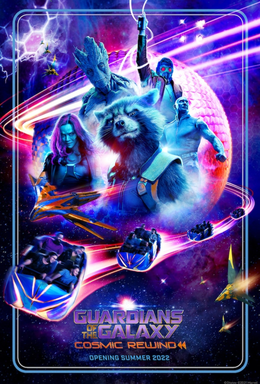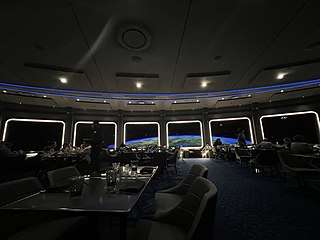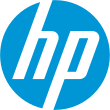
Epcot, stylized in all uppercase as EPCOT, is a theme park at the Walt Disney World resort in Bay Lake, Florida. It is owned and operated by The Walt Disney Company through its Disney Experiences division. The park opened on October 1, 1982, as EPCOT Center, the second of four theme parks built at the resort. Often referred to as a "permanent world's fair", Epcot is dedicated to the celebration of human achievement, particularly technological innovation and international culture.

Soarin', also known as Soarin' Over California, Soarin' Around the World, Soaring Over the Horizon and Soaring: Fantastic Flight, is a flight motion simulator attraction at Disney California Adventure, Epcot, Shanghai Disneyland, and Tokyo DisneySea. It employs a mechanical lift system, a projected presentation on an 80 ft (24 m) concave 180-degree dome screen, and artificial scents and wind to simulate a hang gliding flight over locations in six of the world's continents. Many consider it the first flying theater.

Tomorrowland is one of the many "themed lands" featured at all of the Magic Kingdom styled Disney theme parks around the world owned or licensed by The Walt Disney Company. Each version of the land is different and features numerous attractions that depict views of the future. Disneyland Park in Paris includes a similar area called Discoveryland, which shares some elements with other Tomorrowlands but emphasizes visions of the future inspired by Jules Verne.

Horizons was a dark ride attraction at Epcot, a theme park at Walt Disney World in Bay Lake, Florida. Located on the eastern side of the Future World section of Epcot, the attraction used Disney's Omnimover system, but unlike most omnimover systems, it was suspended from a track above, which took guests past show scenes depicting visions of the future. It is believed to be the sequel to Walt Disney's Carousel of Progress, an attraction in Tomorrowland at Walt Disney World's Magic Kingdom. Horizons was the only attraction in Future World to showcase all of Epcot's "Future World" elements: communication, energy, transportation, anatomy, along with humankind's relationship to the sea, and the land.

Spaceship Earth is a dark ride attraction at the EPCOT theme park at the Walt Disney World in Bay Lake, Florida. The geodesic sphere in which the attraction is housed has served as the symbolic structure of EPCOT since the park opened in 1982.
The Omnimover is an amusement ride system used for Disney theme park attractions. Roger Broggie and Bert Brundage developed the system for WED Enterprises, which patented Omnimover in April 1968. The term was coined by Imagineer Bob Gurr. Outside of Disney, it is sometimes known as an Endless Transit System.

Test Track is a high-speed slot car thrill ride manufactured by Dynamic Attractions located in World Discovery at Epcot, a theme park at the Walt Disney World Resort in Bay Lake, Florida. The ride is a simulated excursion through the rigorous testing procedures that General Motors uses to evaluate its concept cars, culminating in a high-speed drive around the exterior of the attraction.

World of Motion, presented by General Motors, was the former occupant of the transportation pavilion in Epcot at Walt Disney World Resort. It was an opening day attraction at EPCOT Center in 1982 and it closed in 1996 to make way for Test Track, a new thrill ride through a GM testing facility.

The Wonders of Life pavilion was an attraction at Epcot at Walt Disney World in Lake Buena Vista, Florida. It was devoted to health care, focusing on the human body, physical fitness, medicine and nutrition. Attractions included Body Wars and Cranium Command. It is located inside a golden colored dome between Mission: SPACE and Wonders of Xandar. It opened on October 19, 1989, and closed on January 1, 2007. From 2007 to 2018, the Pavilion acted as EPCOT's Festival Center, before becoming a construction site in March 2019 in preparation for the upcoming Play! Pavilion to replace it.

The Seas with Nemo & Friends is a pavilion located in the World Nature section of Epcot, a theme park at the Walt Disney World Resort in Bay Lake, Florida. The pavilion is themed as an oceanic exploration base called SeaBase Alpha, with several exhibits devoted to oceanic study. The building includes an aquarium and its attached dark ride attraction, a talk show-type attraction called Turtle Talk with Crush, and the Coral Reef Restaurant. With 5.7 million US gallons of tank volume, the pavilion is also the second-largest aquarium in the U.S. and the sixth-largest in the world.
Mission to Mars was an attraction located in Tomorrowland at Disneyland and at Walt Disney World's Magic Kingdom. It originally opened as Rocket to the Moon at Disneyland in 1955, and as Flight to the Moon in Walt Disney World on Christmas Eve 1971, before it was retooled to the Mars version in 1975. It then closed down in 1992 and 1993, respectively. The attraction simulated taking guests on a space trip to the Moon or Mars.

Body Wars was a motion simulator attraction inside the Wonders of Life pavilion at the Walt Disney World Resort's Epcot. Riders would be taken on a mission by the fictional Miniaturized Exploration Technologies corporation to study the effects of the white blood cells on a splinter inside the left index finger of a volunteer. The attraction used the Advanced Technology Leisure Application Simulator technology previously seen at Disneyland's Star Tours attraction. The ride is no longer in operation along with the other attractions inside the Wonders of Life pavilion, which opened on October 19, 1989, and closed on January 1, 2007.

RocketMan is a 1997 American comic science fiction film directed by Stuart Gillard and starring Harland Williams, Jessica Lundy, William Sadler, and Jeffrey DeMunn. A partial remake of the 1967 film, The Reluctant Astronaut, it was produced by Walt Disney Pictures and Caravan Pictures, and was released on October 10, 1997.

Space Mountain is an outer space-themed, indoor roller coaster in Tomorrowland located at Walt Disney World's Magic Kingdom theme park in Bay Lake, Florida, near Orlando. The dark ride, which opened on January 15, 1975, is the original version of the iconic attraction that has since been replicated at other Disney theme park locations worldwide, with the exception of Shanghai Disneyland Resort. Space Mountain is one of the first computer operated roller coasters and is also the oldest operating roller coaster in the state of Florida.

Star Wars: Hyperspace Mountain is an indoor/outdoor steel roller coaster in Discoveryland at Disneyland Paris. Originally themed around Jules Verne's classic 1865 novel From the Earth to the Moon, the attraction first opened on June 1, 1995, three years after the park's debut in an attempt to draw more guests to the financially unstable European resort. Unlike other Space Mountain attractions at Disney theme parks, the installation at Disneyland Paris had a steampunk-detailed appearance with a Columbiad Cannon and a plate-and-rivet exterior under its previous theme. It is the only Space Mountain to feature inversions, a launch, a section of track that exits and re-enters the interior, and a synchronized on-Board audio track. It is by far the largest Space Mountain installation at any Disney theme park.

Guardians of the Galaxy: Cosmic Rewind is an enclosed roller coaster at Epcot at Walt Disney World, manufactured by Dutch company Vekoma. Based on the Marvel Cinematic Universe Guardians of the Galaxy films, it is the first attraction at Walt Disney World to feature characters from the Marvel Universe. Opened on May 27, 2022, it is Epcot's first roller coaster and Disney's first backwards-launched roller coaster. It replaced the Universe of Energy pavilion, which closed on August 13, 2017.

Epcot Forever was a limited-time fireworks show that premiered on October 1, 2019, at Epcot. Epcot Forever served as an interim replacement for IllumiNations: Reflections of Earth until its long-term replacement, Harmonious, premiered in 2021. It took the form of a celebration of Epcot's musical history. The show celebrated the park's 37-year history, featuring fireworks, music, lighting, lasers, and special effects kites set to new arrangements of music originating from some of the park's classic attractions, such as Journey Into Imagination, Spaceship Earth, Soarin', Tapestry of Nations and Universe of Energy. The show was also made to celebrate the past, present, and future of Epcot.

Journey of Water is a walkthrough Epcot attraction inspired by the animated film, Moana. It was originally set to open in 2021 as a part of Walt Disney World's 50th Anniversary celebration. However, the attraction was delayed to October 16, 2023, as part of The Walt Disney Company's centennial celebration, due to the COVID-19 pandemic. Since then, it was announced that a new outdoor meet-and-greets location called Character Greeting, right located next door to the attraction, would opened in exact same date, which was became part of Journey of Water Pavilion.

Space 220 Restaurant is a theme restaurant at Epcot, one of the four main parks at Walt Disney World in Bay Lake, Florida, United States. Run by the Patina Restaurant Group, it was established on September 20, 2021, as a space-themed restaurant. It is modeled after a space station and has simulated daytime and nighttime views of the Earth inside the dining area. Guests are brought into the dining area through a simulated journey 220 miles up to Centauri Space Station using a space elevator known as the Stellarvator.





















